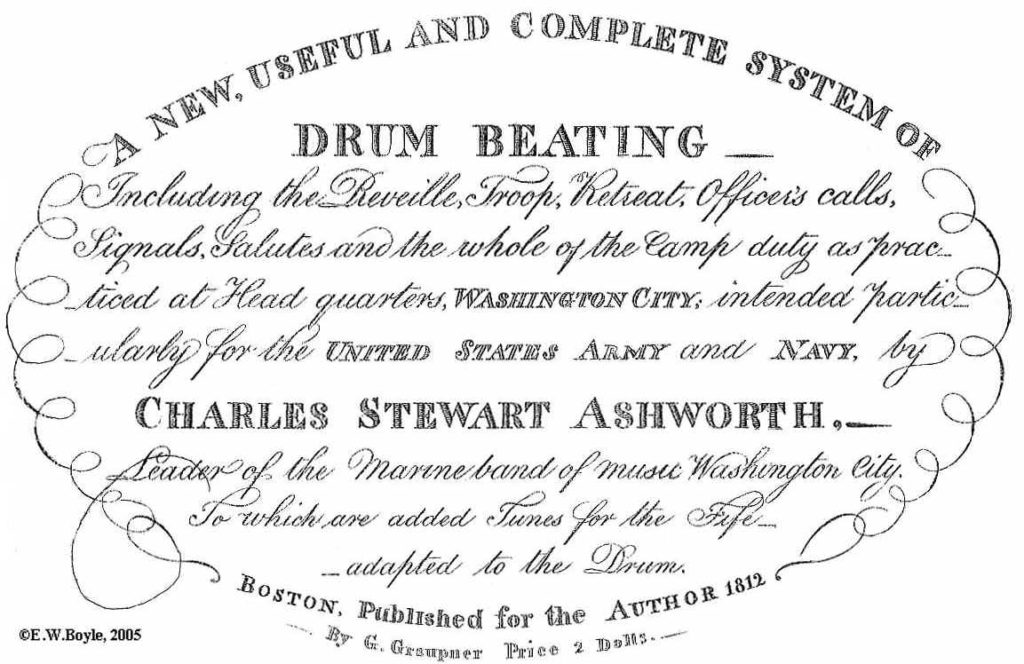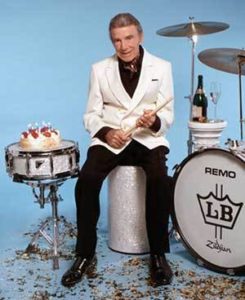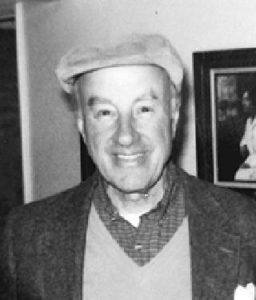
When the United States Marine Corps band was newly founded, Charles Stewart Ashworth was the Drum Major. He contributed by establishing a way on how the craft of rudimental drummers learned the rudiments. After only 14 years, the band had acquired a reputation for its quality of musical performance. However, as a new drummer came in, he felt that they were not up to par. He wanted them to be more skilled by the time that they joined and also he needed a tool to teach his fellow members.
Ashworth set up his rules to be observed by young drummers in his work “A Useful and Complete System of Drum Beating.” It was here where he described what he felt was all the basic rudiments of the time in detail, which included the Reveille, major Duty Calls, along with 36 duty calls and tunes for fifers. His work was published on January 14, 1812. The book is both a tutor and contains 40 pages of history. The book is believed to have provided, 50 years later, the nucleus of “Bruce & Emmitt’s Drummers” and Fifers” Guide.”
When George Washington, in the winter of 1778, rehearsed the teachings of Baron von Steuben, they played the English drumming tradition on the parade ground of Valley Forge.
Rudiments morphed a lot throughout history. I have another article where I explain the history of the drum rudiments in another article. However, as time went by English drummers produced short rhythmic patterns. They gave those patterns names, and passed those patterns on to colonial drummers that arrived in the United States of America. The patterns were a way of communicating to the soldiers what activities they needed to perform in camp. Some of the sequences were signals that meant that they were to get firewood or water. Other patterns signaled how they should direct their movements in battle.
Some of the drummers were creative. They used these patterns to enliven popular melodies. These melodies both brought comfort to the anxious soldiers and also gave them the courage to face the enemy in battle. It was required for the drummers to practice these patterns often and to become good at playing them.
As time went by, these patterns along with other patterns became known as the snare drum rudiments for the drums. There is a lot of debate on “where” these rudiments came from. However, it is important to note that Charles Ashworth was a serious contributor to the craft of Rudimental Drumming.
Charles Stewart Ashworth wrote, “Rudiments for Drum Beating in General.” In this book he described 26 patterns to be used by contemporary British and American armies and militias.



